TPG Week 11: A (Mostly) Silent Opening Sequence
Hello, and welcome to another installment of The Proving Grounds! This week brings us budding comic scribe Kyle Raios. Kyle’s been patiently waiting for his turn, and it’s now arrived! Let’s see how he does.
(Kyle put his contact info here. I stripped it out. This is NOT a mistake. I just don’t want to be posting everyone’s private info for the world to see.)
Benedict
Chapter 1 – The Reincarnation of Benjamin Breeg
Page 1
Panel 1: An apartment complex in downtown Philadelphia. Fairly nice, wood floors. Things seem to be in order. We’re pulled back at the moment, the apartment in full view. It is night, and all the lights in the place are out. Only the full moon illuminates the apartment. Clearly too, we are several floors up. (I’m seeing right now, there’s going to be a lot of red. First things first. How is the reader supposed to know this is an apartment complex? Next, unless this is a studio or something very small, how is the reader supposed to see the entire apartment? If it is night and all the lights are out, where is the light to see the entire apartment coming from? Where is the window that allows the moon to be seen? How is the reader supposed to know we are several stories up? This is not a proper establishing shot.)
Panel 2: Pull in closer now, and we see Ben’s silhouette. Illuminated by the light flooding in through the picture window is a small, wooden chair. Above hangs a noose, tied tightly to the rafters. Ben is seen putting dog tags around his neck. He is all silhouette. (Hm. If we could see the entire apartment before, where was Ben? See the problem I’m having here? Where was the chair? Why didn’t we see the noose? Depending on how the individual sees it, he could be seen as taking the dog tags off, instead of putting them on. Lots of problems here, basically because this wasn’t set up correctly.)
Panel 3: Focal point now on Ben. Illuminated, save for his face, as he has his back turned to the audience. He steps onto the chair, one arm reaching up for the noose.
Panel 4: Largest panel on page, as his face comes into illumination. Ben places the noose around his neck. (I’m not going to ding you for not describing how Ben looks. That should be between you and the artist. What I AM going to ding you for is the fact that there is no description of Ben’s expression.)
Now, I’m going to tell everyone something. I abso-tively, posi-lutely HATE a silent opening page. I feel that, for a new series, you as a writer have too much work to do in establishing your world. I hate them, and to be honest, most new writers do it wrong.
This, however flawed, is done right. It is a silent, dark, quiet time, which is in keeping with the mood of what’s happening. While I would like some words, I don’t necessarily need words to get what’s going on. There is a time when you need to learn to shut the hell up. Kyle shut up. This page is good work. (Just do it justice by setting it up right!)
Page 2
Panel 1: With the noose around his neck, Ben pulls a worn picture from his pocket. The audience cannot see the picture, and will not for sometime. It is horizontal, an ensemble shot. The back of the photo, which can be seen, is white and worn, clearly aged a bit and has been folded in several places, many times. (Okay. Some questions. What pocket does he pull the picture from? See how important that questions is? Jamie, WHY is that question important. And then, John Lees, tell me what my next question is.)
Panel 2: Ben has folded the picture, and is placing it back into his pocket. (Too big of a jump. Have him perform only one action here. I suggest the folding of the picture. To tell the truth, there is too big of a jump between the last panel on P1, and these two panels. Tyler, what would you do somewhere in these three panels?)
Panel 3: And with a quick kick, the chair is pushed out from underneath him. (No. You can’t show a quick kick this would be better in two panels: one showing his feet on the chair, and the next showing his feet dangling. This necessitates putting the camera at a relatively low angle. You don’t want to see his whole body for this.)
Panel 4: A pulled back shot, silhouette of Ben’s hanging body, involuntarily kicking as his body spasms, begging for air.
And here we are, second page in, and not a word said. Four panels. Your reader is about to go into P3, and so far, has spent less than 30 seconds on your book. That includes turning the page. That, Kyle, is not good. Like I said, you have WAY too much work ahead of you in setting up the world and telling the story than to start out with back to back silent pages.
Page 3
Panel 1 – 3: Ben’s legs convulsing, kicking. A cloud moves past the moon, showing the passage of time. We don’t see his face here, only his convulsing legs. (So, this is a low-angled shot. And do you want to know how you show the passage of time? You have the clouds seen at the edge of a window/panel, and then they creep across, and then they’re at the opposite side of the window/panel. But, really, this is padding. Three panels of this?)
Panel 4: Close-up of Ben’s face, eyes wide, bloodshot. Focus on the eyes. (Why? How is this pushing the story forward? What is to be gained by seeing his face being asphyxiated?)
Panel 5-6: Wide shot of Ben, as his right hand scratches against his leg, just inches above the knife sheathed at his side. It is a desperate motion, as his face turns purple, his eyes almost bulging. His gaze is upward, not at his side. His mouth is open, gasping for air. (It’s magically delicious. That sheathed knife just came out of nowhere. Poof!)
As a page, this is mostly padding. And still not a word spoken.
Page 4
Panel 1 : Ben has grabbed the knife, and he is now removing it from its sheath. (Where’s the camera?)
Panel 2: With one arm, with all the strength he can possibly muster, Ben has pulled himself several inches up, and has placed the knife blade against the rope. His arm is bulging with veins, hurting with the intense pressure now on it. His face is still purple, his eyes still bulging. (Prose writing. It’s getting some of the feeling across, but it’s still prose writing. Now, how do we know his arm is bulging with veins. What is he wearing [or not]? You haven’t said. I could say he’s wearing a leopard skin muscle-shirt, and you couldn’t gainsay me, because you didn’t tell anyone.)
Panel 4: The knife drops to the ground, clanging on the floorboard. (What happened to Panel 3? The good thing here is also the bad thing here: you skipped it wholesale. This gives you an opportunity to go back and make sure the two panels line up correctly, but it also should have been done in the first place.)
SFX: (What sound effect is supposed to go here? The letterer is going to want to know.)
Panel 5: Ben loses consciousness, and his arm has fallen to his side. He is tilted back, and his face is purple. The moonlight reflects his hanging shadow onto the floor below. (Okay. Time for me to do a quick google search. Be right back. Alright. I’m back. Just wanted to see how he could be hanging from the neck and tilted back. He can’t. So, this is an impossibility.)
Panel 6: Close-up on the rope. It is now hanging on only by a strand, and the strand is heavily frayed. (We should have been able to see this in the previous panel. Then the close-up would be warranted. Good place for a page turn, though.)
This is a better page than the last. However, it’s P4, and no one has said anything. Do you know what’s happened? Your reader has put it back on the shelf. You failed to keep their interest. If you’re lucky, they’ve spent a minute in the book. A minute. That includes turning the pages. You bored them, and so have lost the Can I Have Your Money game. They decided they could get more bang for their buck by getting a seventh ongoing Deadpool title.
Page 5
Full Page: Ben has dropped , the noose still around his neck, but loose. He gasps for breath, his hands outstretched, his eyes still bloodshot, and the veins in his arm still bulging. Dust, just a bit, explodes into the air from the floorboards. The moon is in the background, another cloud passing over it. (Decent use of a splash page. It’s placed correctly, and it’s visually interesting.)
Ben: Ah-huhhhhhhhhh!!!!! (At last, someone speaks! Too bad it’s too late to be interesting.)
Okay, let’s run this down.
It isn’t good.
Format: Perfect. I’m not a fan of the italics for the panel descriptions, but I don’t have to be. All I really care about is consistency, and you were consistent with it. You also put in page breaks, which I was happy to see. Format, to me, is the easiest part of scriptwriting. Imagine my surprise when I see people get it wrong.
Panel descriptions: Not good. You didn’t do a very good job of an establishing shot, leaving out extremely vital info. There are also quite a few panels that aren’t thought out at all. You need to do a better job of visualizing what you want and getting it down so it can be interpreted.
Pacing: I like the panel counts, for the most part. There were some skips that can be smoothed over, and some padding that needs to be cut out, but I liked the pacing here. However, I feel that this passage should be in the middle or the end of the book, because it’s silent.
Dialogue: What dialogue? I’m going to call it a failure on that end, because there is absolutely nothing to read. Like I said before, you have too much to do as a writer standing up a new series. Five pages of silence to start a book just doesn’t work for me. I don’t know what the story is about, and the visuals aren’t enough to make me stick around. On the shelf it stays, then. Do everyone a favor, and at least start the story (dialogue) in the last panel of the first page. You’ll be happy you did.
Content: Despite what I said above, I liked the use of the silent opening page. It was done right. However, as a story, I don’t know what’s going on, and so I’d be leaving it on the shelf.
Without looking at the rest of the book (we’re only getting an excerpt here), I think that this is powerful enough to stay the way it is (silent), but it needs to be moved from the opening sequence. Tell the story, set it up, so that readers will come to know what’s going on and care about the characters as the story unfolds.
And that’s what I’ve got for this week. Check the calendar to see who’s next!
Related Posts:
Category: The Proving Grounds

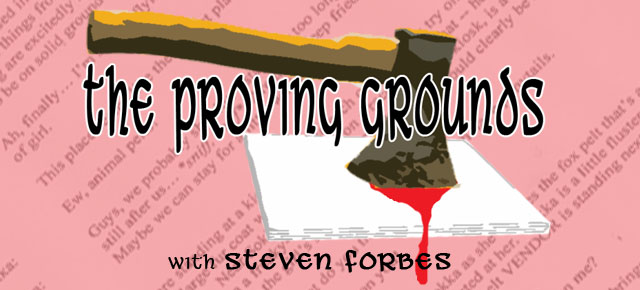



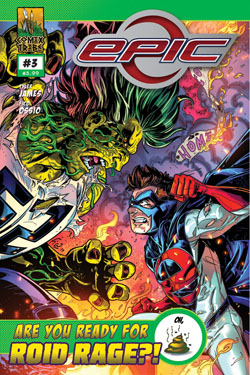

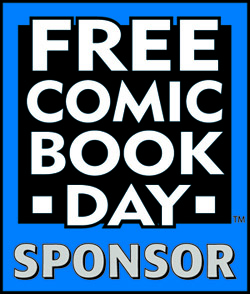


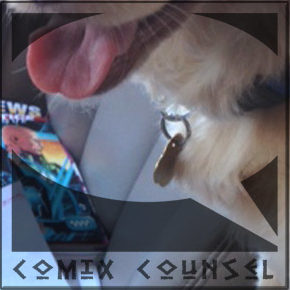
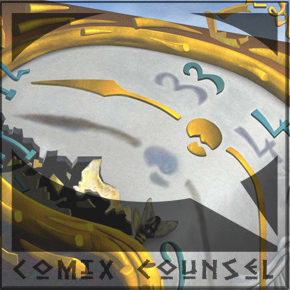
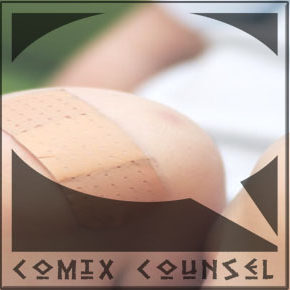
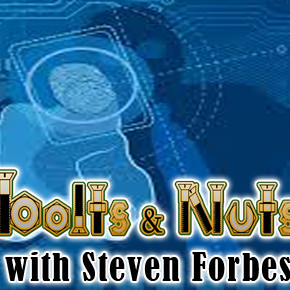

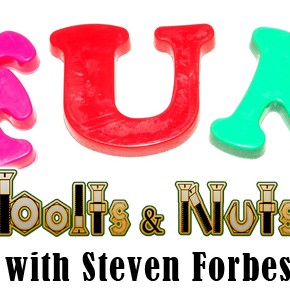


Stephen,
Let me first say, THANK YOU. Having my script critiqued by a complete stranger on a public forum was certainly not the easiest thing to do, but damn, I’m sure glad I did it.
Your criticisms were constructive and spot on, and I will certainly be using them in working with this script. That’s what I really needed too. Constructive criticism outside the realm of friends.
I never really realized how silent the first FIVE pages were until put into perspective like this, and to me, that was just a bonehead move on my part that I regret immensely.
For whatever reason, establishing shots seem to be my weakness, and that is what I’m seeking to correct in all my scripts. These few pages definitely need more description, better set-up, and above all, condensed. And that is something that I will set to rectify immediately. If it would be all right, I’ll post an edited version of these pages in the comment sections as soon as I can, using what I’ve learned here. And I’ve learned quite a bit from this site. And it’ll be better.
So, thanks again dude. I really appreciate this, and I promise that the next submission will be superior.
-Kyle-
Kyle, thanks for submitting this. You’re certainly right, posting stuff on a public forum for critiquing ISN’T easy. But no one gets better getting pats on the back from their friends and relatives. Objective feedback from someone with absolutely zero stake in your ego can be infinitely helpful. You’re attitude toward taking the crits will take you a long way, my friend.
Take a look at the opening sequence of American Vampire #1 if you get a chance. Scott Snyder did a great job of mixing captions from one scene with a silent, dark, unrelated scene. The juxtaposition made for both an interesting read that draws the reader in. I feel like you need something here. I don’t necessarily want to hear the main character’s inner monologue about why he’s hanging himself…that might bore me. But you need something.
I’m late! I know! I know! Work was crazy, though!
Kyle, thanks for submitting this. I’m looking forward to the new version.
Panel 1: With the noose around his neck, Ben pulls a worn picture from his pocket. The audience cannot see the picture, and will not for sometime. It is horizontal, an ensemble shot. The back of the photo, which can be seen, is white and worn, clearly aged a bit and has been folded in several places, many times. (Okay. Some questions. What pocket does he pull the picture from? See how important that questions is? Jamie, WHY is that question important. And then, John Lees, tell me what my next question is.)
err, I’m not entirely sure. The view we would be seeing of Ben would be different depending on the pocket in question, so we could see a close shot of his torso, with the noose in the top of the frame, if he were pulling if out of his shirt pocket, and a wider shot of his back if he were taking it from his back trouser pocket, but since this panel does not call for anything else to be seen that wouldn’t really be a big deal, other than from a lighting perspective (which could probably be cheated).
If we are going to see the picture again, however, it does matter very much which pocket he puts it back into, because if we do not see the actual content of the picture we are going to have to have some other clue that this is the same one.
Exactly! That’s it exactly, Jamie. Good work. Thank you.
Page 2
Panel 1: With the noose around his neck, Ben pulls a worn picture from his pocket. The audience cannot see the picture, and will not for sometime. It is horizontal, an ensemble shot. The back of the photo, which can be seen, is white and worn, clearly aged a bit and has been folded in several places, many times. (Okay. Some questions. What pocket does he pull the picture from? See how important that questions is? Jamie, WHY is that question important. And then, John Lees, tell me what my next question is.)
If I was editing, my next question would probably be, “What is Ben’s reaction to the photo?” The script never specifically says that Ben even looks at the photo when he pulls it out of his pocket, but I think it’s safe to assume he would, rather than just holding it out at arm’s length. But while we can accept as common sense Ben would look at this picture he has taken out of his pocket, he could have any number of reactions.
Is it a photo of lost childhood friends? Perhaps then he’d be looking at the photo with a small smile, remembering a happier time. Or is it a photo of a murdered loved one, enough to make his face twist in anguish just looking at it? Heck, since we only see the white back we don’t know if it’s even a photo. It could be a blackmail letter, and Ben could be looking at it with a frightened expression on his face. Is the photo driving his decision to hang himself, or is it something to potentially live for? His expression could provide a lot of clues.
Well, John, I gotta say…
That’s exactly it! (He should know the question by now, folks. I ding him for it at least three times in every new script he sends to me. And now that I’ve said it, he’s going to make sure that I don’t have the opportunity to ding him for it in the next script he sends over.)
Good work!
You guys crack me up. As usual, I’m loving TPG, a lot to learn every time. I’m a fan of silent panels when they are pulled off nicely. I think the ones that convey inner dialogue can be even more powerful. Like in SCALPED when Bad Horse and Crow’s daughter “mind chat” back and forth. Er, I’m going back to my hole now!
All righty, I did some editing using the critiques given here. It’s a bit cut down, descriptions are more thorough and the holes are filled. It’s still silent, but I will be using the advice here to move this sequence out of the very beginning, or perhaps intertwine it with a parallel, not silent sequence. Either way, Stephen and TPG people, you guys have been great and I thank you immensely.
Sorry for the delay on this, but that pesky History degree I’m working on has to come first from time to time.
Page 1
Panel 1: We open with an outside, straight on establishing shot of a large apartment complex in downtown Philadelphia. It is night, and the apartment windows are all dark, leaving only the full moon to illuminate the complex. On the top floor, positioned in the top centre area of the page, we see Ben’s silhouette and that of the chair, with the faint outline of the noose hanging above the chair. Ben stands with his arms raised as he puts his dog tags around his neck.
Panel 2: Interior of Ben’s apartment now. The illumination by the moon gives full view of the chair under the noose, which we can now see is tied tightly to the ceiling beam above. We are behind Ben, as he has finished putting the dog tags around his neck, and stands facing the chair. On his left leg, above the knee but below the hip, is the outline of a sheathed knife.
Panel 3: Focal point now on Ben. He is fully illuminated, save for his face, as he continues to be turned away from the camera, and we see now that he is shirtless, revealing the That Others May Live tattoo on his right arm. He has stepped onto the chair, one arm reaching up for the noose.
Panel 4: Largest panel on page, as his face comes into illumination. Ben is placing the noose around his neck. His eyes are closed, and his chest raised in a breath as he does this.
Page 2
Panel 1: Low angle shot of Ben, standing on top of the chair with the noose around his neck. His right hand is reaching into his right pocket, and his head is lowered looking to his right side as he does this.
Panel 2: Close-shot of Ben from the torso up, as he has pulled a worn picture from his pocket. The audience cannot see the picture, and will not for sometime. It is horizontal, an ensemble shot. The back of the photo, which can be seen, is white and worn, clearly aged a bit and has been folded in several places, many times. Ben is looking at it, his jaw tightly clinched and his eyes staring at the photograph with a distant look.
Panel 3: Close-up shot from a downward angle by Ben’s head, on the left side, looking down towards Ben’s feet. He has folded the picture in half.
Panel 4: Low angle shot from Ben’s stomach down. His right hand is placing the picture back into his right pocket.
Panel 5: Identical shot, but now the chair has been kicked out, and lies on the ground. Ben’s lower body now dangles in the air.
Panel 6: A pulled back shot, silhouette of Ben’s hanging body, involuntarily kicking as his body spasms, begging for air.
Page 3
Panel 1: Close-up of Ben’s face, eyes wide, bloodshot. Focus on the eyes.
Panel 2: Wide shot of Ben, as his right hand scratches against his leg, just inches above the knife sheathed at his side. It is a desperate motion, as his face turns purple, his eyes almost bulging. His gaze is upward, not at his side. His mouth is open, gasping for air.
Panel 3: Focus on the knife, as Ben’s fingers clasp onto the hilt
Panel 4: With one arm, Ben has pulled himself several inches up, and has placed the knife blade against the rope. His arm is bulging with veins, and his his face is a deep shade of purple. His eyes are still bulging, more red from exploding blood vessels than anything.
Panel 5: The knife drops to the ground, clanging on the floorboard.
Panel 6: Pulled back shot, as Ben loses consciousness, and his arm has fallen to his side. His head is tilted forward, and his face is purple, while his body hangs freely, dangling. The moonlight reflects his hanging shadow onto the floor below. The rope, in the place where Ben had used the knife, is seen to be hanging now by only a few strands, and they are frayed heavily.
Page 4
Full Page: Ben has dropped , the noose still around his neck, but loose. He gasps for breath, his hands outstretched, his eyes still bloodshot, and the veins in his arm still bulging. Dust, just a bit, explodes into the air from the floorboards. The moon is in the background, another cloud passing over it.
Ben: Ah-huhhhhhhhhh!!!!!
Interesting.
Much better than the first iteration. However, I still have problems with it.
The first, biggest problem is the beginning. Follow my logic:
You’re outside, at night. You’re looking in through a window, but you’re across the street. The moon is out. The house is dark inside. Can you see anything through the window?
Why, or why not? Anyone.
No, almost anyone. Ruiz Moreno. Your turn! (Because I’m evil like that.)
After Ruiz answers, then we’ll talk about it.
Thanks for submitting it, though, Kyle. It’s appreciated. And yes, college is a LOT more important than anything going on over here.
That is very evil. Very very evil. So I’ll give it a go and Kyle please understand I’m a novice at comic writing so I’m learning as we all are!
In my opinion, reading the original script and then the modified version as well as taking in to account Steven’s summary this is what I’ve come up with.
I would say that you could not see through the window. I was trying to run the scene through my head and visualize many aspects of what was written. If I’m standing across the street looking up at the top floor of an apartment complex at night with only the moon gleaming onto it then I’m posed with more questions. How many floors is this place? Logically if I’m on the street my eyes would only be able to see about three floors up at night at a window with a chance of catching detail. Then I ran into another problem. If the moon is gleaming off of the apartment complex then either one of two visuals pop in my head. Either I am seeing the moon off of the windows or it’s still too dark for me to see inside. That also places the question of where the moon is but since it is lighting the outside of the apartment complex I have to place is across from the complex.
So I start to visualize the camera is set on top of a building of equal height across from the apartment window across the street. This way I have a better chance of seeing the silhouette of Ben, the chair and the noose hanging. Also, if I’m taking the brightness of the moon into account now that I am viewing at equal level of the scene there’s a better chance of lighting done correctly and not catching the moon in direct reflection of the window based of course on the placement of the actual moon. I would also imagine there is some faint light source in the apartment off in the distance to better illuminate the silhouettes.
There is my least descriptive response to your question Steven. I tried to not over analyze an answer. Evil indeed sir. 🙂
Ruiz! See, that wasn’t hard at all. You were good until you went to the same height as the window. You’d still be faced with the same problems at almost any height, as long as it is dark inside the house. Good work, though. It got you thinking!
So, Jamie Fairlie, how do we fix this?